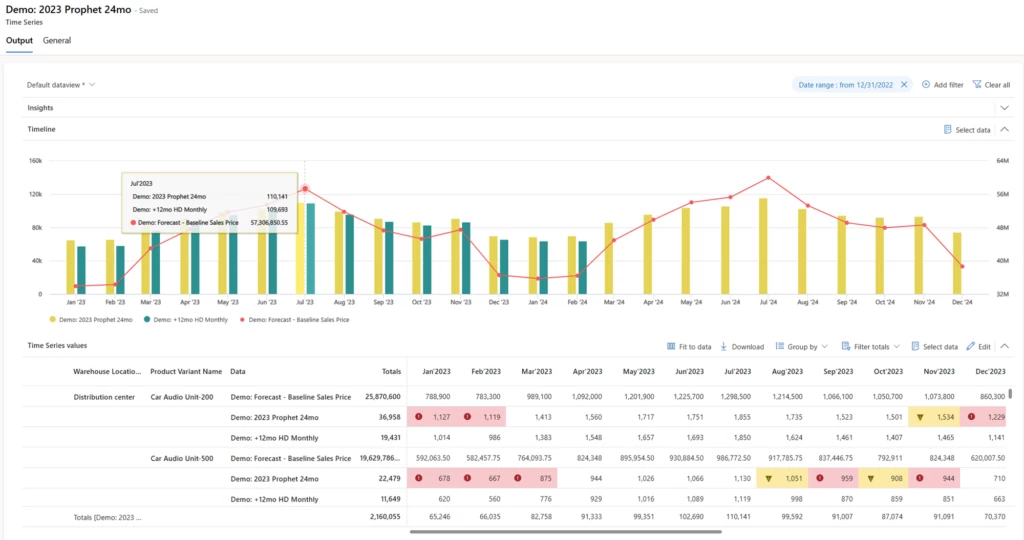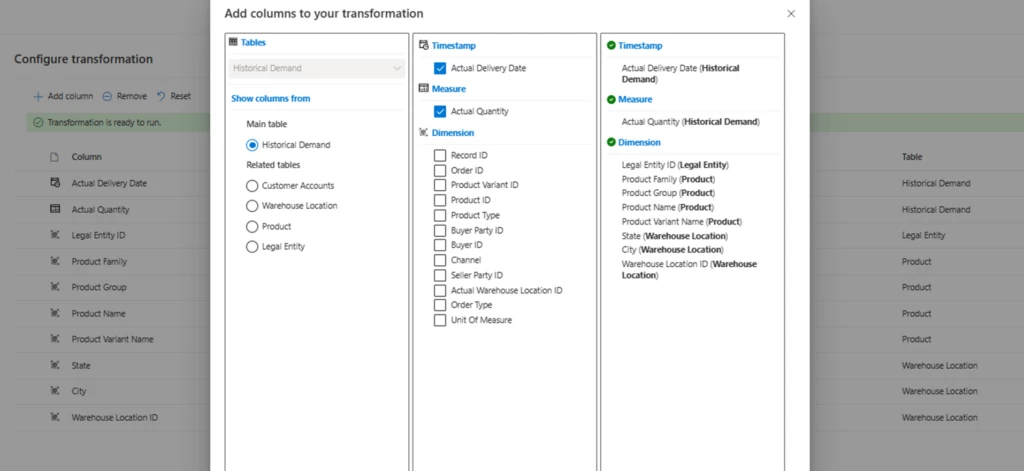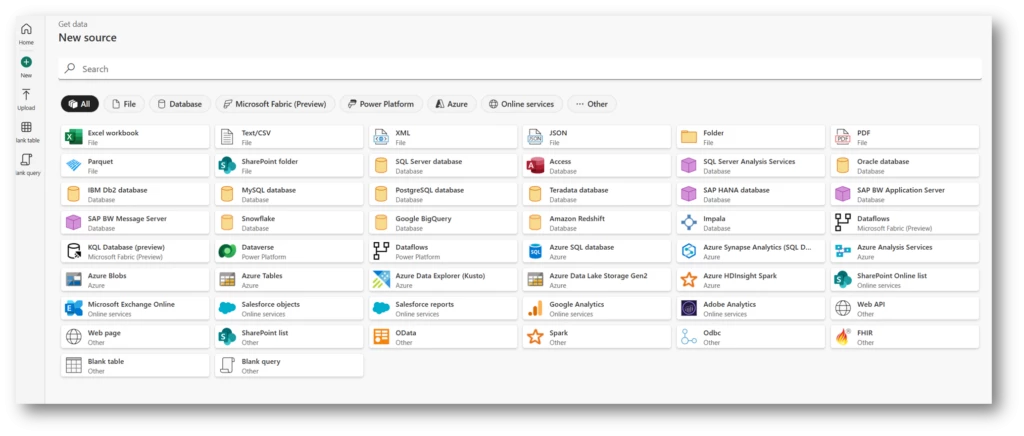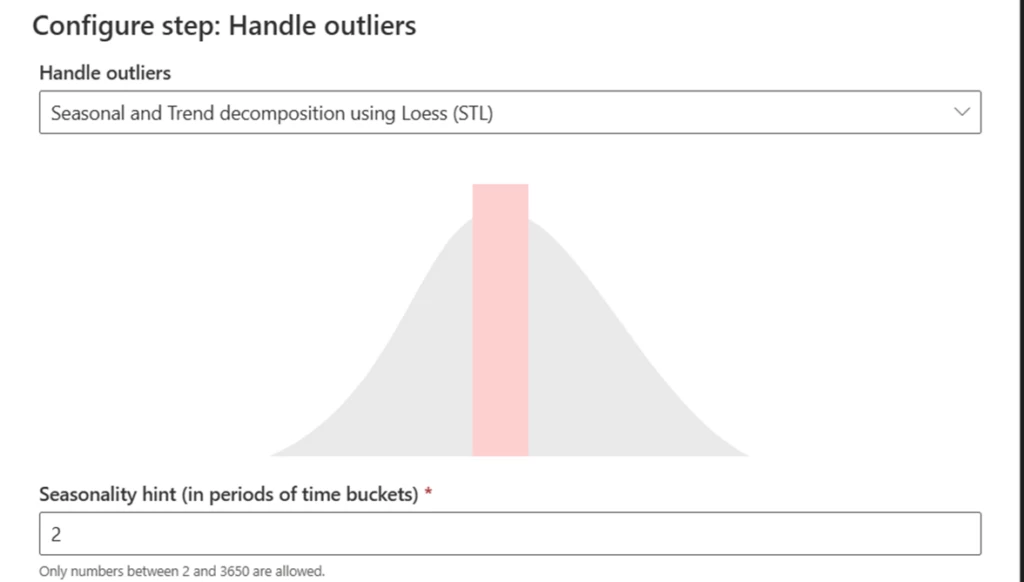
Revolutionizing Supply Chain Management with Dynamics 365 Demand Planning: Unleash the Power of AI-Driven Precision
Introduction:
Revealed during the Fall 2023 Microsoft Business Applications Launch Event and made available for Public Preview on October 31st, 2023, demand planning in Dynamics 365 Supply Chain Management is set to transform the landscape of modern supply chain management. It represents a transformative force in supply chain management and a pivotal component of Microsoft’s AI-driven ERP offering. In today’s fiercely competitive market, as businesses confront ever-changing challenges, adopting intelligent demand planning has shifted from being an optional strategy to an absolute necessity for not only surviving but thriving. This solution empowers businesses with the means to manoeuvre through the complex modern supply chain landscape while maximizing profitability confidently, adaptably, and successfully.
The exceptional feature of demand planning in Dynamics 365 Supply Chain Management is its seamless integration of customized entities into the Dynamics 365 Finance and Operations platform. This simplifies the fluid transfer of data from diverse sources, potentially encompassing multiple instances of Dynamics Finance and Operations and data lakes. Leveraging the power of Azure Data Explorer (ADX), it efficiently manages the storage and manipulation of data, ensuring top-tier performance even when handling extensive and complex datasets. What’s more, it equips users with robust metrics and error calculations, such as Mean Absolute Error (MAE), Mean Squared Error (MSE), and Root Mean Squared Error (RMSE), enabling continuous evaluation and enhancement of demand planning strategies.
The Essential Role of Demand Planning in Supply Chain:
Before we dive into the essential features and functionalities of our demand planning in Dynamics 365 Supply Chain Management, it is paramount to comprehend the critical role that demand planning plays in modern supply chain management.
Demand planning is the process of forecasting future customer demand for products and services. This process allows organizations to allocate resources efficiently, manage inventory effectively, and optimize production schedules.
Accurate demand planning yields several benefits:
- Efficient Resource Allocation: Accurate demand forecasting enables organizations to allocate resources, such as raw materials and labour, efficiently, averting overproduction or underproduction, which in turn reduces costs and minimizes waste.
- Optimized Inventory Levels: With a clear understanding of expected demand, companies can maintain optimal inventory levels, thereby reducing carrying costs and the risk of stockouts.
- Enhanced Customer Service: Meeting customer demands promptly enhances customer satisfaction and loyalty, fostering repeat business.
- Cost Reduction: Efficient demand planning minimizes costs associated with excess inventory, production inefficiencies, and expedited shipping.
- Market Responsiveness: In today’s fast-paced market, the ability to adapt swiftly to changing demand patterns is paramount for business survival.
Demand Planning Across Industries
Now, let’s delve into real-world business scenarios to demonstrate how the vital features and capabilities of the new demand planning capabilities for Dynamics 365 Supply Chain Management can enhance your supply chain operations, resulting in increased efficiency, profitability, and customer satisfaction.
AI Forecasting Models:
An electronics manufacturer employs advanced AI forecasting models such as Exponential Smoothing (ETS) and Autoregressive Integrated Moving Average (ARIMA) to predict the demand for electronic components. These models consider historical sales data, market trends, and economic indicators.
Benefit: Accurate demand forecasting ensures that the manufacturer can plan production schedules efficiently, minimize component stockouts, and avoid overproduction. This results in cost savings, improved production efficiency, and reduced waste.

Data Hierarchy Management:
A grocery store chain uses product hierarchy management to categorize its products into various departments (e.g., produce, dairy, meat) and hierarchically organizes stores by region. They employ a time hierarchy to capture seasonality, distinguishing between regular, holiday, and promotional seasons.
Benefit: The well-structured data hierarchies allow the grocery chain to make data-driven decisions about product assortment, inventory levels, and targeted marketing. They can stock products tailored to regional preferences and optimize promotions during peak seasons, resulting in improved customer satisfaction and profitability.

Collaborative demand planning:
A multinational electronics manufacturer faces the challenge of coordinating demand planning efforts across multiple regions. The solution’s collaborative planning feature enables demand planners from different locations to work on the same dataset, with access restricted to their region’s data.
Benefit: This ensures transparency and facilitates consensus building among regional teams, with version control maintaining a history of changes for traceability and accountability.
Location-Based demand planning:
A worldwide food distributor needs to accommodate differing demand patterns across regions. The solution’s location hierarchy categorizes distribution centres by their respective regions, while correlation analysis pinpoints how local factors such as sporting events, concerts, and more impact demand in specific locations.
Benefit: The distributor can adjust inventory and distribution schedules based on location-specific demand patterns, ensuring on-time deliveries and minimizing waste.
Real-Time demand monitoring:
A high-tech consumer goods manufacturer aims to monitor demand in real-time to respond swiftly to market changes. By integrating data from their e-commerce platform as virtual entities and utilizing Azure Data Explorer for rapid data aggregation and analysis, they gain real-time insights into demand fluctuations.
Benefit: The manufacturer can adapt production, inventory, and marketing strategies in real-time to meet customer demands promptly, ensuring market competitiveness.

Outlier Detection and Handling:
A pharmaceutical company utilizes outlier detection algorithms to monitor medication demand. When an unexpected spike in demand occurs, they investigate the cause. For instance, if there is a sudden increase in demand for a specific vaccine, it triggers an investigation to check for disease outbreaks, ensuring an adequate supply.
Benefit: Rapid identification of outliers helps the company respond to unforeseen events promptly. This ensures the availability of critical medications during emergencies and enables compliance with regulatory requirements, ultimately safeguarding public health.

Demand Forecasting and Inventory Management:
Imagine a retail chain specializing in seasonal fashion items. The Solution allows them to integrate external data sources such as historical sales, promotional insights etc. Utilizing advanced forecasting models and outlier detection, they can accurately predict demand for each product category and SKU.
Benefit: This capability empowers the retailer to fine-tune inventory levels, optimize procurement, and proactively plan marketing campaigns, preventing overstocking or understocking and reducing carrying costs.
Let’s see how one of our customers, Domino’s Pizza UK and Ireland is planning to use the demand planning capabilities in Microsoft Dynamics 365.
Conclusion:
In conclusion, Microsoft’s unveiling of demand planning in Dynamics 365 Supply Chain Management during the Fall 2023 Microsoft Business Applications Launch Event, followed by its Public Preview release on October 31st, 2023, marks a pivotal moment in the field of modern supply chain management. This ground-breaking addition, a fundamental component of Microsoft’s AI-driven ERP suite, signifies a momentous transformation in a constantly evolving market. It equips businesses with an unparalleled level of precision, delivering advanced forecasting models such as ARIMA, ETS, Prophet, Best fit and others to guarantee the utmost accuracy in demand predictions. demand planning in Dynamics 365 Supply Chain Management
In today’s complex supply chain landscape, real-time monitoring, compliance assurance, and comprehensive audit trails foster transparency and accountability. The demand planning solution is not just a tool; it’s an integral part of Microsoft’s AI-driven ERP offering. Embrace it today to steer the future of your supply chain, harnessing the full potential of Microsoft’s capabilities for a brighter and more efficient tomorrow.
Learn More
Access the demand planning solution, Documentation, and Workshop:
To access the demand planning Application and learn more about its features, follow the provided links. Additionally, don’t miss the upcoming demand planning workshop in Denmark to dive deeper into this transformative tool.
Access the demand planning in Dynamics 365 Supply Chain Management:
To install the latest version of the demand planning application, ensure that you are using Dynamics 365 Supply Chain Management, and then visit the Power Platform Admin Center. Search for the Dynamics 365 demand planning Application and follow the installation process.
Click here to access: Demand planning in Dynamics 365 Supply Chain Management

Demand planning Documentation:
If you’re interested in learning more about our demand planning Application, we’ve prepared an extensive collection of highly informative documents for your review and easy access.
You can find them right here: Demand planning Documentation

Demand planning – Demonstration Videos:
We’ve taken extra steps to create a series of informative demo videos that will not only guide you through the application but also showcase a multitude of features available in the demand planning Application.
Demand Planning Insights Videos:
Meet the Team: Workshop December 2023
The forthcoming demand planning Workshop, to be held at Microsoft’s facility in Lyngby, Denmark, is geared towards introducing the new demand planning application to both Customers and Partners. Furthermore, it will provide an in-depth exploration of the product’s features and capabilities.
The workshop will also cover various important topics, including:
- Exploring the contents of the Public Preview October 21st and December update.
- Engaging hands-on lab activities.
- Participating in a user experience (UX) study or exercise.
- Understanding how these developments align with the broader context of Supply Chain Planning.
- An overview of Copilot for demand planning.
- Customer insights and feedback.
Please note that a more detailed agenda will be provided to attendees as the workshop date approaches.
Date: 4th+ 5th December 2023
Duration: 2 days
Location: Lyngby, Denmark
Demand Planning Community – Yammer
Join our Yammer group to stay updated with monthly evaluations, scripts, and videos related to the demand Planning Application. Your journey to supply chain transformation begins here.



